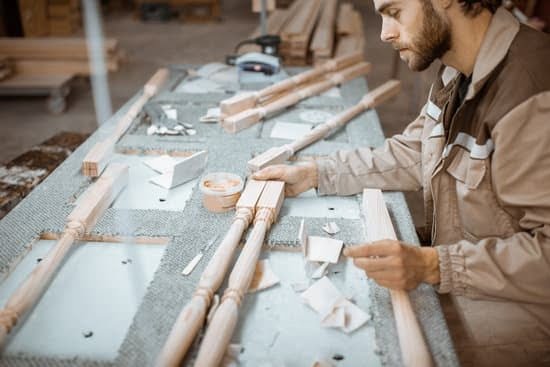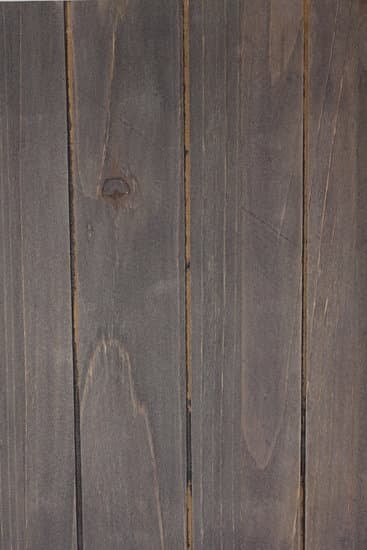Introduction
Woodworking is an art that involves both manual and motorized tools, as well as specific techniques for working wood in a variety of styles and for various purposes. Experimentation is often necessary to develop skill, craftsmanship, and creative designs. Any person interested in woodworking must have a good selection of essential professional-grade tools available to create quality products.
An essential element of any woodworking project is the selection of tools. Such items as saws, drills, routers, sanders, clamps and planes are essential in creating interesting pieces out of wood. If a woodworker does not have the right type or size of tool for their particular project than their efforts will be less than successful.
Saws are used to make cuts with precision accuracy. The two most popular types are hand saws and power saws with blades made of either steel or carbide depending on type and purpose. Hand saws include coping saws, crosscut saws, backsaws, rip saws and dovetail saws while power saws range from circular saws, table saws and band saws to jig sawsand miter boxes or grinders . All these help shape or cut wood precisely for a variety of projects such as making furniture or cabinetry for home use.
Drills are also an important part of success when it comes to cutting into hardwood materials by allowing holes to be quickly drilled into different surfaces with consistent results every time. Bits usually come in sets determined by type needed such as variable sizes of straight bits all the way up to specialty auger bits designed specifically for soft wooden surfaces while other styles better penetrate harder materials such as metal alloy and plastic.
Routers come in many sizes ranging from small handheld ones designed primarily for trimming around edges up to larger cabinet routers equipped with motors ranging from one quarter horsepower all the way up two three horsepower varieties that can both cut accurately and with speed when larger scale job has been specified by client . Sanders also come in variety such hand held sheet sanders orbiting sanders belt sanders disc sanders finishing sanders radius sanders spindle sanders each used different extent depending material being finished .
Clamps are important since they hold pieces firmly together during glue or resin drying processes ensuring boards don’t separate becoming useless article fashioning desired item . Types clamps typically used include strap clamp C-clamps bar clamps edge clamps pipe/bar clamps toggle clamps ratchet bar clamps corner clamps bench screw hand screwed swing arm pipe joint folding beam edge spreader polygrip .
Lastly Plane comes array varying sizes suited narrower wider types rough planing finely finishing surface piece Hardwood softwood even chipboard using smoothing plane fitting rabbets tongues grooves etc Avid amateur professionals alike use wind own individual tastes talented craftsman alike recognized understanding correctly correctly put together joinery strength performance product receives reflects how tool chosen utilized end justifying means
Tool Basics
Whether you are a beginner in woodworking or a professional, having the right tools is essential for completing any woodworking project. The most common and basic woodworking tools involve saws, clamps, drills, and chisels. Here is a breakdown of the various types of this equipment and their most common uses.
Saws: By far one of the most important pieces of equipment for any kind of woodworking or carpentry project, saws come in many different shapes and sizes. From handsaws to powered miter saws, they can be used to cut specific angles with precision and ease. Crosscut saws are designed to make straight cuts across grain lines, while ripsaws help create more curved lines along them. Coping and panel saws can create very intricate designs and are usually recommended for more advanced projects where intricate details are essential.
Clamps: Clamps play an equally pivotal role when it comes to working with wood since they’re integral in holding pieces together during assembly. A variety of clamp types exist such as bar clamps, C-clamps, pipe clamps, strap clamps, spring clamps bumpers and more”each type has its own purpose that should be taken into consideration before use.
Drills: Drilling holes into wood is a crucial part of numerous projects so having access to the appropriate type of drill is necessary. There are cordless drills which will help with portability needs as well as industrial-grade drills that have greater power output but should only be operated by experienced professionals due to their greater risk factors associated with them.
Chisels: Used for carving out fine details as well as hollowing out spaces within larger portions of wood stock ” chisels come in different sizes like flat head chisels (perfect for creating edges), round nose chisels (useful when hollowing out round holes) and mortise chisels (used with mortising machines). These tools should always be handled carefully since they’re capable of doing damage if mishandled.
Sandpaper: Using sandpaper requires technique if finer results are desired but its mainly used in order to smooth out surfaces after other forms of cutting or carving has been done on the material itself”traditional grit levels range from extra coarse up to super fine grit depending on how much finishing touch you plan on incorporating into your project piece itself
Essential Hand Tools
One of the most important aspects of woodworking is utilizing essential hand tools. Some examples of these essential hand tools include claw hammers, planes, saws, braces and bits, chisels and gouges, mallets and hand drills. There are a few best practices to consider when using these essential tools in order to ensure both quality workmanship and safety.
First, make sure all hand tools are properly sharpened before beginning a project. Dull blades can cause injury as well as produce poor results when used on hardwoods or plywood. Sharpening should be done regularly in order to keep wood surfaces free from tearing or splintering during the cutting process.
Second, practice good posture when working with power tool or hand tools. Make sure you’re sitting comfortably in an appropriate chair with your back straight and feet flat on the floor. This will provide better leverage for any activities that require strength such as clamping materials together or hammering nails into place. Additionally, it will reduce fatigue while working on long projects throughout the day.
Thirdly, invest in quality protective gear prior to starting any project and wear it each time you use a power tool or hand tool that may be hazardous in some way. Goggles should always be worn when sanding particles may become airborne; gloves should always be worn when gripping pieces of wood together that could splinter easily; and finally hearing protection should also be utilized when operating noisy machinery like table saws or drill presses. Not only will this protect yourself, but it will help ensure a higher quality end product by avoiding unnecessary accidents while creating the piece of art!
Power Tools
When looking for the right tools for your woodworking project, it’s important to consider all of your options. You’ll want to evaluate factors such as tool power, weight, ease of use and control, performance speed and cost.
Power tools can dramatically reduce labor time, allowing you to do more in less time. Many experienced woodworkers turn to cordless varieties due to their convenience. Batteries are lighter than cords, allowing you greater freedom of movement when working in a variety of areas. Consider the size, weight and balance of the tool before making a choice. Optimal ergonomics provide superior comfort and control while using a tool and can help prolong work periods before fatigue sets in.
Also think about the type of operation each tool is designed for ” percussive impact drills are great for drilling holes faster and more efficiently, while circular saws cut with far less vibration than reciprocating saws or jigsaws for smoother results on long edges or curves. Other power tools may suit unique applications including routers, which shape intricate grooves or carvings with precision that handheld tools simply can’t achieve. Quality is key when purchasing any power tool; compare reviews from satisfied customers as well as safety certifications on models within your range by trusted organizations like Underwriters Laboratories (UL). Finally, paint scrapers, sandpaper blocks and waxed clamps can be just as essential when creating smooth finishes on surfaces or edges that need extra polish.
Safety Procedures
At the top of the list for important tools for woodworking are safety procedures, guidelines and best practices. Woodworking can be a dangerous activity if proper care is not taken. First, it is vital to always wear appropriate safety gear when working. This includes eye protection, dust masks, and protective gloves and clothing. Additionally, make sure that all saws, routers and other power tools are used according to manufacturer instructions. Always cut away from your body, use guard systems both on machines and hand-held cutting tools where applicable, and take caution when making sharp turns while sanding or routing edges.
When it comes to materials handling, take special care to lift heavy pieces properly using another person or mechanical assistance if available. Ensure that debris is cleared away while you’re working so you don’t trip over materials or drop them onto your feet. When dealing with wood finishes and stains, be sure to read all safety labels beforehand to prevent unnecessary hazards such as inhalation of fumes or skin contact with chemicals. Always exercise caution when handling hot materials such as glue guns, epoxy resins or lacquers in aerosol cans. Lastly, keep a well-stocked first aid kit nearby in case of accidents by ensuring that disposable gloves are included in addition to the regular contents of such a kit. Following these simple tips will ensure maximum safety from start to finish of any woodworking project!
Woodworking Projects
Woodworking is a craft that requires the right tools to make beautiful and durable pieces. Depending on the project you are working on, some tools are more essential than others. The most important tools used in woodworking include:
Saws ” Saws are essential for cutting wood quickly and accurately. Popular saws used in woodworking projects include tension saws, crosscut saws, circular saws, jigsaws, back saws, and dovetail saws. Saws can also be used to cut metals, plastics, and other materials.
Chisels and Hammers ” Used for shaping and forming wooden materials into desired shapes. Chisels come in different shapes and sizes depending on the project you’re working on; such as mortising or gouging chisels. Hammers provide additional force and precision required when driving nails or dowels into a piece of wood.
Sanding Tools ” Sandpaper is often an important part of preparing surfaces for painting or finishing applications, including smoothing surfaces prior to gluing up parts. Popular sanding tools include stationary belt sanders for large areas, orbit sanders designed for shaping contours, random-orbit sanders with built-in dust removal systems, palm sanders for smaller projects, vibrating multi-tools with multiple attachments pieces that allow users to reach tight spaces with precision. Additionally, using pressure washers is another popular method of cleaning very soiled surfaces effectively since they use powerful jets of water to blast dirt off surfaces quickly.
Drills ” Drills are effective at boring holes faster than manual methods without compromising accuracy. They come in both electric-powered models as well as cordless drills which may offer more portability when working in remote locations away from power outlets or while traveling between project sites using vehicles or boats. Common drill bit types commonly used in woodworking include twist bits up to half inch bits as well as Brad point bits which can be used when extra accuracy is needed for drilling through thin material like veneer plywood sheets less than 1/4 inch thick.
Routers ” Used for cutting detailed shapes along the edges of boards like circles with precision giving it a professional touch despite the complexity of its shape. Routers come in many different horsepower levels and each horsepower level has its own range of useful applications from small trim routing jobs to larger production remodeling projects that involve thick hardwoods where a router can easily carve out curved profiles along board’s edges accurately every time it is set up properly by experienced operators who know how routers work best with their specific set ups selected based on their type of project specifications’ needs like arc lengths if one was making furniture frames instead of custom moldings around doorways in homes needing renovation where traditional archways would appear unique adding character touches all over again since each wainscoting job will look differently than any other once placed inside existing walls that might otherwise be plastered over yet when architecturally matched custom cabinets blend into them naturally like they were meant to remain objects installing them aesthetically pleasingly intentionally creating stylish results aesthetically pleasingly accordingly introduced via these special tools being actively employed during construction whenever possible before installation phase kicks off whatever transformation effort one engages making outcomes look naturally remarkable strangely remarkably fulfilling consequences felt originating from having done something creatively constructive late evening supper club beers occur allowing finishes show quality craftsmanship accomplished five star ratings follow shortly afterwards complimentary words come through too often gratitude expressed publicly delivered literally meaning ‘oohhs an aahhhs’ tangible followed closely thereafter proudness noted leisurely next day ready mentioning prominent dialogues speaking volumes about impactful creations accomplished purposefully positively propelling focused feelings reverbs echoing widely heard
Cost Management
Woodworking is an important hobby and craft, and finding the right tools for the job is just as important. Knowing where to get items, how to budget for them, and when to look for sales can help you save money while still getting the necessary tools for a successful project.
When it comes to cost management, one of the most important tips for woodworking is knowing when to buy. Shopping around for deals in advance of when a project begins can often result in finding materials on sale or discounted prices that help stretch your budget. Checking online vendors or making calls directly to suppliers can be a great way to find out more information about potential discounts or promotions. Additionally, considering used tools rather than taking a chance with cheaper brands may be worth the investment if you are looking for higher quality equipment at significant savings.
Another effective tool for budgeting is understanding what type of material is best suited for your project”whether it’s hardwoods, softwood, plywood or composite material like MDF. Making sure you know what’s available before committing time and money towards researching other options will do wonders towards helping you stick with your budget. Likewise, pricing variety purchased in bulk orders can also lead interesting results as larger purchases might come at lower costs per item purchased due to economies of scale that often weigh heavily on industrial supply chains.
Finally, woodworkers should make sure they plan projects well in advance so they have a thorough understanding of the tools they need before beginning a build. There’s nothing worse than finding out midway through an assignment that you’ve overlooked certain terminologies or specific supplies needed ” many times forcing users into situations where they have to purchase an item hastily and at premium prices from emergency providers like hardware stores after-hours outlets
Conclusion
Woodworking is a great way to bring out your creativity, sharpen your skills and spend time outdoors. It requires a variety of tools in order to work effectively, from saws and planes to clamps and measuring tapes. When used correctly, these tools can create beautiful pieces of furniture, artwork, or smaller items like birdhouses or cutting boards. In addition to its aesthetic appeal, woodworking also has practical benefits. Working with wood allows people to build things that last longer than other materials; when properly cared for, wooden projects will usually last much longer than those made from plastics or metals. Furthermore, the act of woodworking itself can have calming effects; often times it’s peaceful focuses on the individual working on their project and helps clear the mind of stress. Finally, while some people may never consider starting a woodworking project due to the complexity of using tools properly and carrying out steps accurately, there are plenty of resources available online and offline now that make it easier than ever for anyone to become an expert at creating with wood.

Hi everyone! I’m a woodworker and blogger, and this is my woodworking blog. In my blog, I share tips and tricks for woodworkers of all skill levels, as well as project ideas that you can try yourself.





